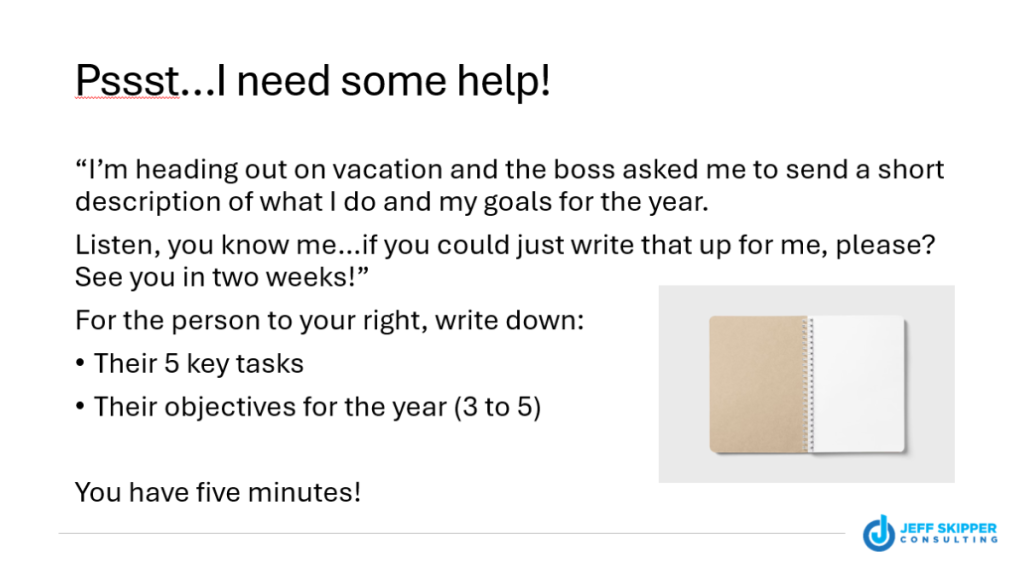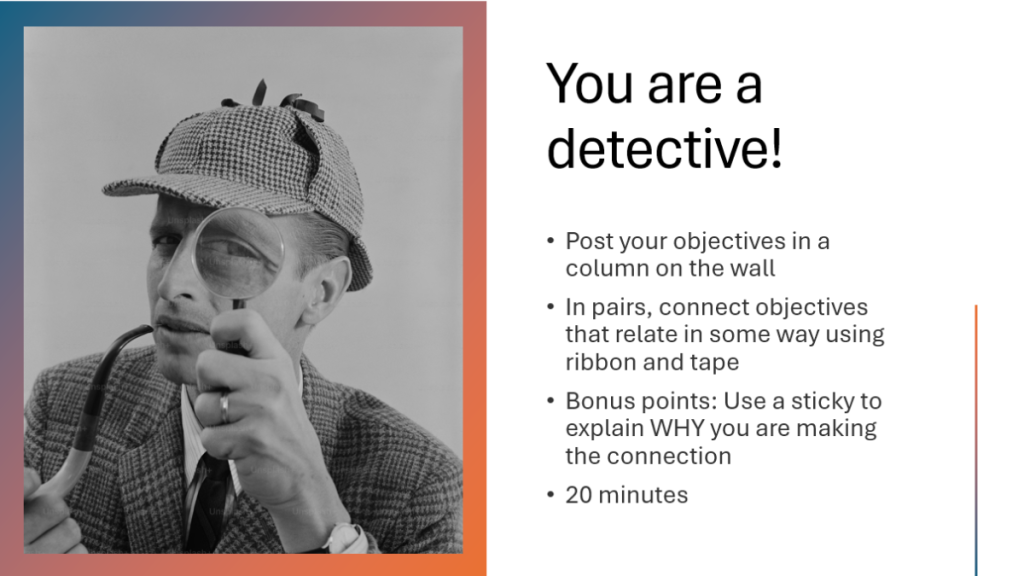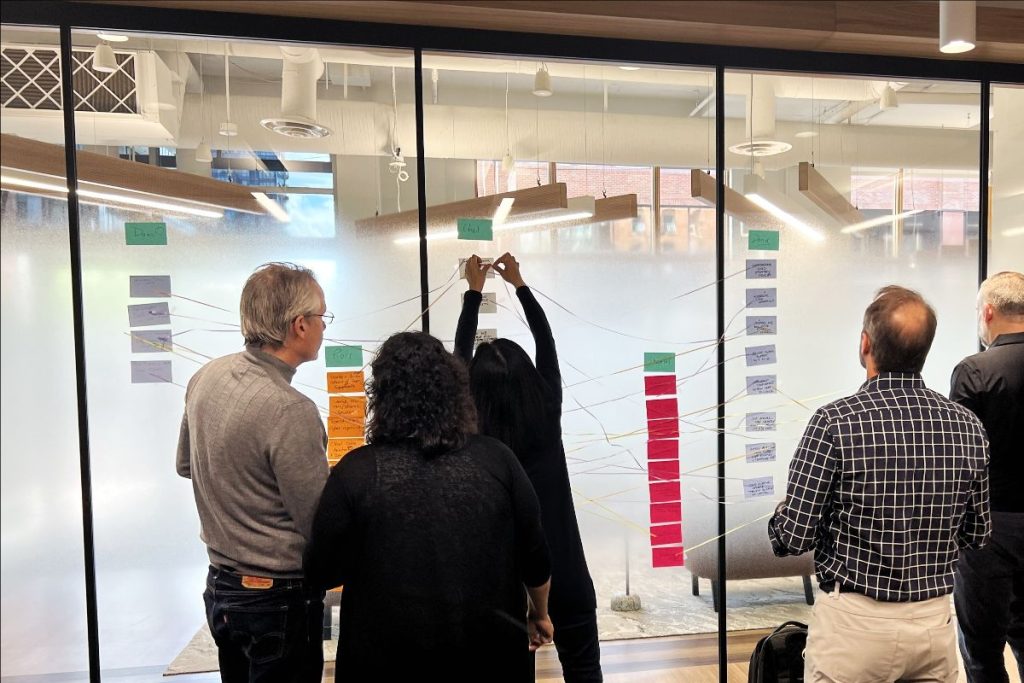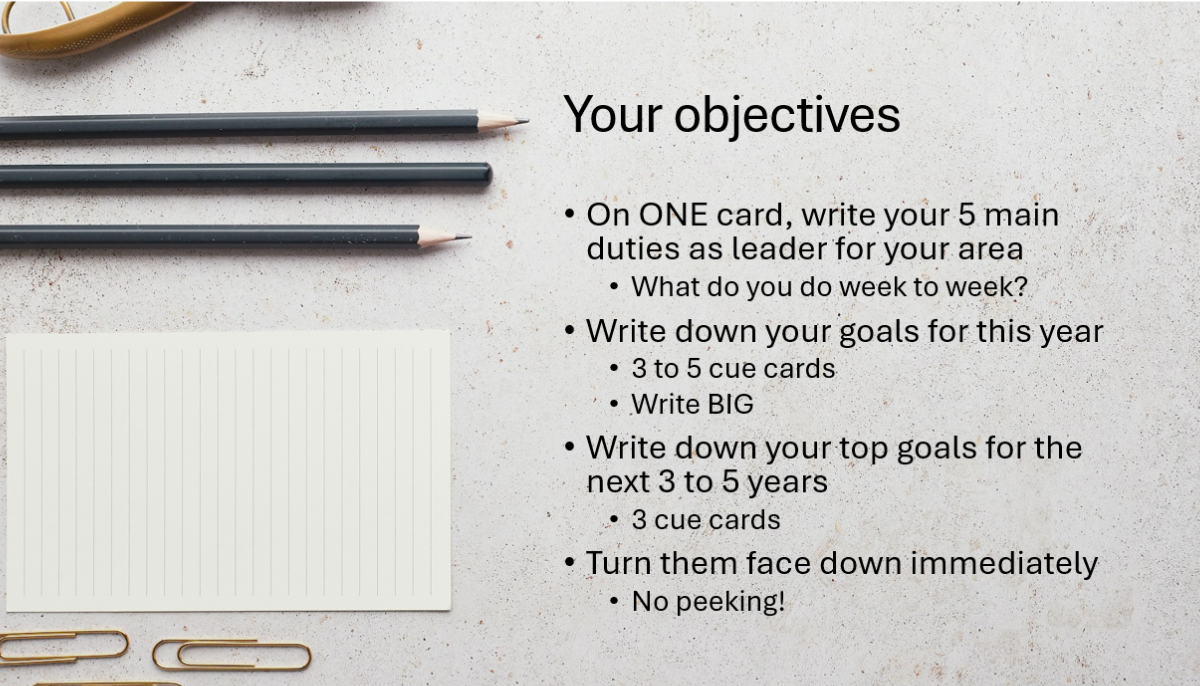I recently ran a workshop with new exercises, and they went extremely well. I’d like to share one with you! The client wanted to help a team achieve greater alignment in their work. This can be run with a group of up to 10 people. We sat around a boardroom table.
Setup & Materials
- Paper and pens
- Sharpies
- Cue cards or sticky notes
- Ribbon
- Scissors
- Tape
Part 1
Ask everyone to think about their role and, using the cards or sticky notes, write down their tasks and objectives. The image above shows the instructions given. It’s important that objectives are only one per card to enable Part 2 of the exercise.

The first step primes the audience. They are thinking about tasks and goals. Now, ask them to take a sheet of paper and write a short description of their neighbor’s main tasks and objectives. Each person writes a description for the person to their right. We don’t want cheating; that’s why I had participants turn over the tasks and objectives they wrote down in the previous step.
When they finish writing, go around the team asking each person to share what they wrote while the person to the right compares with their own notes and indicates what matched their list and what was different. One person said, “Oh those are good objectives! I need to add a couple to my list.”
When finished, I asked why the exercise was important:
- It illustrates how others see us and where that may be different from how we see our roles.
- It identifies some of the significant tasks we do that others are not aware of.
- We need to ensure others know what we do so we can support each other.
Part 2
Now to get them moving around! I asked them to be detectives and analyze connections between the evidence.

I handed out the ribbon, scissors, and tape and let them go, working in pairs. Note that objectives were placed in offset columns to help spread out the connection lines. There was a lot of movement, laughter, and discussion.

As you can see, we ended up with ribbons crisscrossing everywhere. The debrief offered several insights as we discussed:
- Which objectives have few or no connections? Why?
- Which objectives are central to everyone’s success this year (many ribbon touchpoints)?
- How can we facilitate each other’s success and how will that drive our own success?
- Because of the crossover, can we collaborate to be more efficient with some of our tasks? Yes!
The point that helping one another will help ourselves became very clear. The team found this very helpful and left with high energy.
I hope you can use this in your own workshops. My next book, High-Impact Workshops for Leading Change will be out soon! If you like the above exercise, you will LOVE the 30 fresh ideas in the book. If you want to track its release, you can join the cheerleading team here.
Thoughtfully yours,
Jeff



